NVG-40 MEASURING CYLINDERS WITH SPOUT
Borosilicate glass, graduated, single metric scale, with pour out, with Round or Hexagonal base, accuracy as per Class ‘A’.
The NVG-40 measuring cylinders with spout are precision glassware instruments commonly used in laboratories, schools, and various industries for the accurate measurement of liquids. The distinctive feature of these measuring cylinders is their spout, which facilitates easy pouring and minimizes spills, making them extremely useful in applications requiring precise measurements and transfers. Below is a detailed description of their features, uses, material specifications, and care instructions to better understand their role and importance in various fields.
| Cat. No. | Cap. ml. | Graduation interval ml. | Tolerance±ml. | Approx. Total height mm. |
| 40.01 | 5 | 0.1 | 0.05 | 140 |
| 40.02 | 10 | 0.2 | 0.1 | 110 |
| 40.03 | 25 | 0.5 | 0.25 | 330 |
| 40.04 | 50 | 1 | 0.5 | 160 |
| 40.05 | 100 | 1 | 0.5 | 390 |
| 40.06 | 250 | 2 | 1 | 180 |
| 40.07 | 500 | 5 | 2 | 460 |
| 40.08 | 1000 | 10 | 5 | 250 |
| 40.09 | 2000 | 20 | 10 | 570 |
1. Description and Features
The NVG-40 measuring cylinder with spout is designed for accurate liquid measurement, specifically catering to experiments and procedures that require precision. These cylinders have a series of distinct features that make them suitable for a wide range of uses:
- Capacity and Calibration:
- These measuring cylinders come in various capacities, from as small as 10 ml up to 2 liters or more, depending on user requirements.
- Each cylinder is calibrated for accuracy, generally according to industry standards, with clear, permanent graduations that allow easy reading.
- Graduations are marked in both milliliters (ml) and liters (L), allowing for convenient measurement of volumes.
- Design:
- Spout: A major distinguishing feature of NVG-40 cylinders is the spout, which allows for controlled and precise pouring of liquids. This helps in preventing spills, reducing waste, and ensuring accurate transfers of liquids.
- Hexagonal Base: Many NVG-40 measuring cylinders are equipped with a hexagonal base, providing stability and preventing them from easily tipping over during use. This stability is particularly important when working with volatile or hazardous chemicals.
- Graduation Lines: The graduations are evenly spaced, with clear numerical labels to enable accurate measurements. Typically, the markings are printed in contrasting colors to enhance visibility, even for small amounts of liquid.
- Material:
- The NVG-40 measuring cylinders are made from either borosilicate glass or polypropylene (PP) plastic.
- Borosilicate glass is heat-resistant and chemically inert, making it suitable for working with various reagents, including acidic or basic solutions.
- Polypropylene plastic is lightweight, resistant to breakage, and compatible with a range of chemicals, but it is less heat-resistant compared to borosilicate glass.
- Ergonomic Design:
- The spout and the cylinder are designed to minimize dripping, allowing easy, mess-free pouring.
- The presence of a thumb rest on some versions ensures that users have a good grip, making them ideal for controlled operations even when one hand is used.
- Tolerance and Accuracy:
- The accuracy of these measuring cylinders is defined by their tolerance, which is the allowable range of error in measurements.
- Generally, the tolerance level meets ISO or ASTM standards, depending on the specific cylinder type.
2. Uses and Applications
NVG-40 measuring cylinders with spout are used extensively in both educational and professional laboratories due to their versatility. Below are some of the key applications:
- Laboratory Use:
- NVG-40 measuring cylinders are a fundamental part of any laboratory setup, primarily used for measuring liquids with precision.
- They are widely used in titration processes, where precise volumes of a solution must be added in controlled increments.
- They can also be employed in preparing solutions by mixing different chemicals, where maintaining an accurate ratio is essential.
- Industry Use:
- In the pharmaceutical industry, these measuring cylinders are used for formulation, dilution, and preparation of solutions for further processing.
- Chemical industries employ measuring cylinders to test the quality of raw materials, create sample mixtures, and for research and development purposes.
- Educational and Research Institutions:
- NVG-40 measuring cylinders with spouts are ideal for educational institutions, where students can learn the basics of measurement in chemistry and physics experiments.
- They are also used in research laboratories for a variety of experiments, ranging from biological assays to materials research.
- Food and Beverage Industry:
- Measuring precise volumes is key in the food and beverage industry. These cylinders help in quality control, ensuring that ingredients are added in the correct proportions, and in analyzing products.
- Environmental and Water Analysis:
- NVG-40 cylinders are also used in environmental labs, for example, to measure water samples to determine the concentration of contaminants or to perform other tests on wastewater or effluents.
3. Material Properties
The choice between borosilicate glass and polypropylene largely depends on the intended use:
- Borosilicate Glass:
- Heat Resistance: Borosilicate glass has a very low coefficient of thermal expansion, making it resistant to temperature changes. It can be autoclaved and used for hot liquids.
- Chemical Compatibility: Borosilicate is resistant to most chemicals, except for hydrofluoric acid. This makes it ideal for work involving reactive chemicals.
- Transparency: It offers a clear view of the liquid being measured, allowing easy monitoring of the meniscus to read volumes accurately.
- Polypropylene Plastic (PP):
- Durability: Polypropylene is highly resistant to breaking and is more durable than glass, which is especially useful for fieldwork or situations where equipment could be dropped.
- Chemical Resistance: It is resistant to various chemicals, though not suitable for strong acids or bases.
- Cost: Polypropylene is generally less expensive than borosilicate, making it a cost-effective option for large-volume use or where breakage is a concern.
4. Maintenance and Care
To ensure the longevity and accuracy of NVG-40 measuring cylinders, proper care and maintenance are required:
- Cleaning:
- Always clean the measuring cylinder after each use. Borosilicate glass cylinders can be washed with laboratory-grade detergents, while polypropylene cylinders should be rinsed with lukewarm water to avoid deformation.
- It is important to ensure that no chemical residues are left, as they can interfere with future measurements.
- Handling:
- Avoid sudden temperature changes with borosilicate glass cylinders, as this can lead to cracking.
- Ensure the measuring cylinder is placed on a flat, stable surface to prevent tipping over. The hexagonal base design provides additional stability.
- Storage:
- Store the measuring cylinders in a dry environment to prevent the buildup of residue or the potential for breakage.
- Glass cylinders should be stored separately or with padding to avoid contact with other glassware, which could cause damage.
5. Advantages and Limitations
Advantages:
- The spout design allows for easy pouring without spills, making it ideal for applications that require precision.
- The clear graduation markings provide easy volume measurement, ensuring reproducibility in experiments.
- Both glass and polypropylene versions offer versatility, catering to the varying needs of different types of laboratories.
Limitations:
- Glass cylinders are prone to breakage and may not be ideal in environments where robust handling is required.
- Plastic cylinders are more prone to scratching, which can make reading the graduations difficult over time.
- There is a limited range of volume when compared to other volumetric devices like burettes or pipettes, making it less suitable for extremely precise measurements.
Be the first to review “NVG-40 MEASURING CYLINDERS WITH SPOUT” Cancel reply
Related products
Volumetric Glasswares
Volumetric Glasswares
Volumetric Glasswares
Volumetric Glasswares
BURETTES WITH DOUBLE BORE SCREW TYPE ROTAFLOW STOPCOCK WITH TEFLON KEYS
Volumetric Glasswares
Volumetric Glasswares

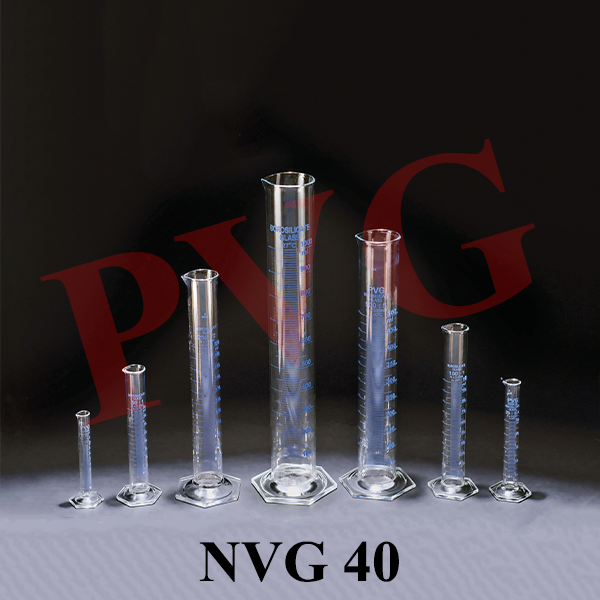
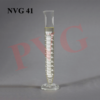

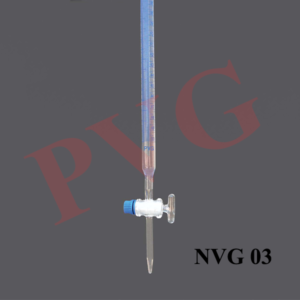




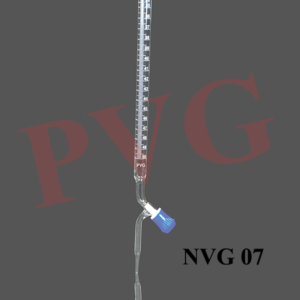
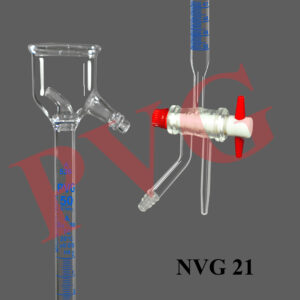
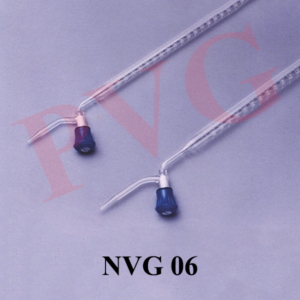
Reviews
There are no reviews yet.